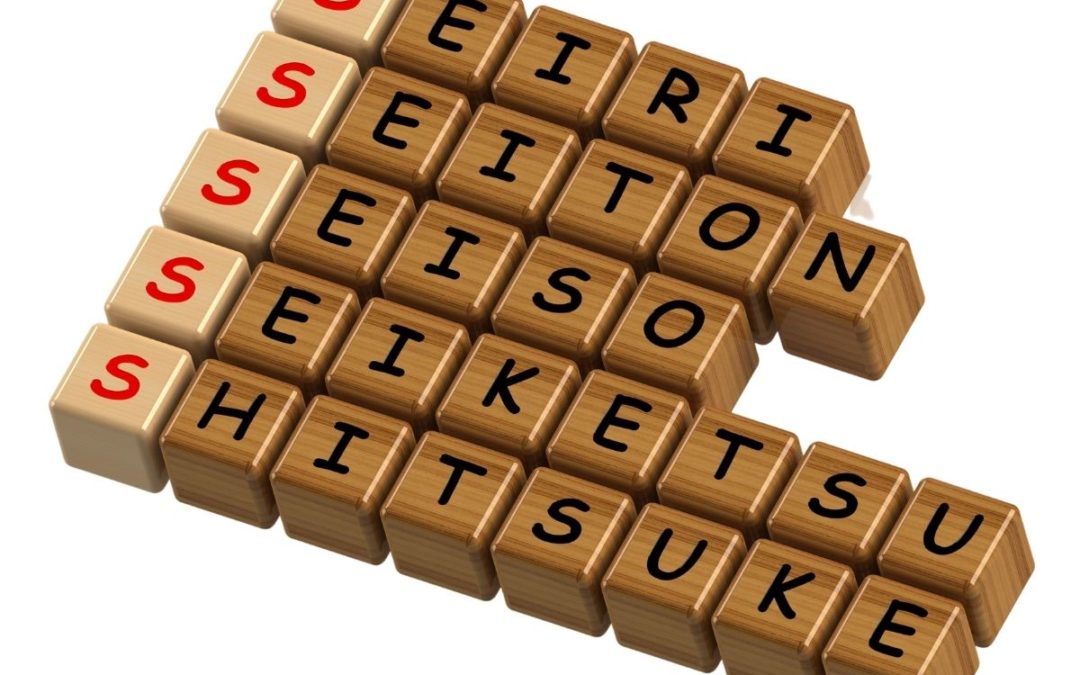
by ifs_admin | Co-Packing
Secondary packaging can be utilized in all sorts of industries, including pharmaceutical packaging. Different products that go through secondary packaging require their process, whether it’s food or cosmetics. Pharmaceutical packaging is no exception and could be even stricter. Because it is dealing with a thing as delicate as medication, special considerations and measures have to be taken. There are laws and structures set down by the FDA to make sure that these products are packaged properly. Secondary packaging is the best way to make sure that pharmaceuticals arrive safely to the masses.
The top priority for pharmaceutical packaging is safety. This form of secondary packaging changes depending on what kind of pharmaceuticals are being packaged. For example, a vile of insulin would come with different safety measures than that of a medication that comes in a blister pack. Ensuring that the right pharmaceutical packaging practices are being put in place is paramount to a job well done.
The active agents in medications and drugs are highly sensitive to all kinds of outside elements. These elements can cause a degradation in exposed pharmaceuticals which can then impact the efficacy of the product. Simple things like light, climate, and oxygen can do a world of damage to even the most common of pharmaceuticals. Secondary packaging provides barriers from these and other factors to keep the product, and its users, safe. Without proper secondary packaging, we could not be guaranteed the safety of vital medications.
In addition to keeping pharmaceuticals safe on shelves and in transit, secondary packaging keeps them sterile. Potency is one thing, contamination is another. A thick layer of plastic or a specialized cap will do wonders for keeping pharmaceuticals away from external contaminants. While those extra layers of pharmaceutical packaging may seem annoying at the moment—the plastic wrap on the child-proof cap, the aluminum seal, the wad of cotton, etc—they are what keep the medications we rely on safe to use.
Durable packaging is a key part of pharmaceutical packaging safety, but it’s not the only thing. Accountability and transparency have their safety values. Secondary packaging entities, like IFS, take careful notes on who has touched what and when on the supply line. This kind of visibility keeps products and people safe. If something goes wrong, knowing where the problem began is the only way to correct things and keep it from happening again. Secondary packaging ensures and documents that products are being handled safely and properly.
The pharmaceutical industry caters to millions of people worldwide. It’s nearly impossible to find a household that doesn’t have at least one pharmaceutical in it, no matter its purpose. Without secondary packaging, it would be impossible to know if the medications you’re taking are sterile and at a dosage that corresponds to the label. When you open a new bottle of pain relievers or uncap an over-the-counter remedy you want to be certain that you are the first person to open it.
Secondary packaging for pharmaceuticals is the last line of defense. The measures that are taken in pharmaceutical packaging are done to keep consumers all over the world safe.
To learn more about our contract packaging services, speak to a specialist!
#impactfs #supplychain #copacking #impactyourbrand

by Angela Mendes | Co-Packing
As we have discussed, in the world of contract packaging there is a need for constant improvement. These improvements can come by way of safety, organization, or standard shifts. When it comes to implementing these improvements we recommend starting with 5S.
Understanding 5S in Contract Packaging
The 5S’s are a group of five Japanese words that are part of an ideology of improvement. Each word has its own definition and role in the grander scheme of your business. These structures are applied to workspaces, inventories, and any day-to-day activity that needs polishing.
- Seiri (sort)
Think of this as the decluttering aspect of the 5S’s. When you sort through your tools, you will decide which necessary tools can be removed altogether. This can be done with steps in a project as well. - Seiton (set in order)
Once you have decided what you need, arrange everything as it needs to be beforehand. This kind of preparedness is a big-time saver in contract packaging, specifically. - Seiso (shine)
Seiso is also referred to as cleanliness. Having a clean workspace has its own set of perks. A clean workspace will make for fewer mistakes, potentially harmful work staff accidents, and even ramp up productivity. - Seiketsu (standardize)
Maintain the first three S’s every day to achieve Seiketsu. This will ensure that everything goes accordingly every day, as long as it’s the standard. - Shitsuke (sustain)
The final step is to sustain S’s one through four. This will help you and your employees form a habit. Forming habits, good habits at that, is the only way to sustain a business. Using the 5S’s will help you get to a more streamlined workflow.
Implementing the 5S’s
The benefits of putting the 5S’s to work in your contract packaging practices are extensive. If you have a neater, or shinier, workspace it becomes safer and easier to navigate. You won’t have to waste time tracking down tools because they will all be sorted in their exact place every time. Instructions and procedures will be second nature to all staff because they will have been standardized.
To learn more about our contract packaging services, speak to a specialist!
#impactfs #supplychain #copacking #impactyourbrand

by Angela Mendes | Co-Packing
The business world is always changing, so continuous improvements are essential. For the contract packaging industry, there are a lot of plates spinning all at once. A co-packing center has to be a well-oiled machine. In order to keep things going, changes must be made to optimize things like safety, space, and speed.
There are easy ways to make simple but effective improvements in co-packing methods. It doesn’t have to be a complete overhaul, changes can be as minor as deemed fit. The implementation of continuous improvement will result in benefits across the board.
Where to Start
Change can be a big undertaking. Continuous improvement can be boiled down to just a few simple steps. It isn’t all that common for core changes to be made. At the end of the day, it all boils down to managing a few key things. Each step feeds into the next to create a cycle of continuous improvement.
These following tweaks will fine-tune the entire co-packing process and benefit both the company and the client.
There are always improvements to be made, some more obvious than others. You should always be analyzing your systems and processes. Whether big or small, looking for ways to improve is the responsible thing to do. Putting things like strict organization, clean-up, and habit forming into action can be done quickly with unlimited advantages.
Organization and 5S
Nothing turns an operation around like organization and visual systems. Making sure that everything has a place will drastically improve how things work. Organization includes setting up procedures and methods that will streamline all processes.
Whether it’s keeping the facility’s tools in order or having shadow boards up in the facilities, organization should take top priority.
Clean-Up
Keeping the work area clean and orderly will improve productivity and reduce accidents. A neat facility cuts down on missteps and accidents that could cause problems and cost money.
If excess materials are left out on the floor that could cause employee accidents or line shutdowns. Maintaining a workspace that looks tidy will improve efficiency and keep the product and employees safe.
Habit-Forming
The more diligent companies become with putting these particular procedures in place, the easier it will all become. Forming a habit requires a certain amount of discipline. Workers and management alike have to be willing to go through the steps every time, not just through the motions. If there is a commitment to what needs to be done companies will end up with improved operations and a more sustainable strategy. The key here is to engage everyone in the process so they will buy into the value continuous improvement will bring to customers and to them personally.
Delivering Value
Now that the basic steps are in place, you can embark on your continuous improvement journey. The journey can begin with simply standing on the production or warehouse floor and looking for waste. Waste can mean many things but in sum, it simply means movement or activity that occurs, that does not deliver value to the product or service. For example, if a person must walk through isles to look for inventory that was not put away properly, the effort consumed looking for the inventory is waste. Another form of waste would be a slow process that bottlenecks another process so employees are waiting for work. Whatever the challenge may be, there is likely a better and faster way to deliver the end result. Co-packers will invest in engineers or continuous improvement specialists to do Line Balancing. This means that the work is looked at and balanced to ensure a proper and fast flow of work.
The value created by focusing on the flow of work is the work gets done faster and more work can get done. This results in customer satisfaction, because of their ability to scale and shareholder satisfaction because it costs less money to produce more work. The added benefit is that employees enjoy their work because it is productive and not burdensome.
To learn more about our contract packaging, speak to a specialist!
#impactfs #supplychain #copacking #impactyourbrand

by ifs_admin | Co-Packing
There are layers when it comes to co-packing—primary and secondary packaging. Different products and businesses will have different packaging needs. Just the same, some co-packers only deal in one or the other. Primary packaging is the first step for everything on any shelf, secondary packaging is a more specific process with safety in mind.
Primary Packaging
Primary packaging is the first thing that happens after the product is complete. It is the box the dog treats come in, the tube that holds the mascara. Primary packaging is what the consumer will put their hands on when they are using whatever that product might be.
The primary packaging of a product is what keeps it safe. It is the first thing that goes on and the last line of defense. Primary packaging will determine how useful a product is in the end. If the packaging is defective it puts your product at risk. Having solid primary packaging is important to the integrity of your product and your brand.
Brand and branding are key parts of the importance of primary packaging. Making sure your product looks presentable is huge in driving sales and getting your brand across. You want to make sure your logo is clearly presented, and your packaging is neat. If you display a disheveled product to the masses, that will be part of your brand.
Having a polished product out on the market is the best way to build up your reputation. A well-placed logo is quick and easy advertising. It doesn’t take a marketing team to know that effective branding is crucial to driving business. If done properly, primary packaging can build your brand just as well as other typical marketing strategies.
Secondary Packaging
Secondary packaging is the sort of packaging you are more likely to see in a bulk store like Costco or Sam’s Club. This is the form of packaging that binds things together. For example, in a bundle of a dozen paper reams the primary packaging is the wrapper and the secondary is the plastic tie keeping them in stacks of two and the box holding them all together.
While you would still want your secondary packaging to look presentable, that’s not its primary function. It is about efficiency over all else. Keeping products together so they can be safely transported from warehouse to seller.
The process of secondary packaging is the last step before shipping. That makes it that much more important. Co-packers who deal in secondary packagings, like IFS, have to make sure their packaging team is equipped and ready for the process. This is the final step that will make or break your product in transit.
Nearly every product will need secondary packaging of some kind. Just for transportation, tubes of toothpaste and deodorant containers need to be packaged into larger distribution boxes. Some products, like those that are connected by plastic rings, keep their secondary packaging at the store. However, something like boxes of soap would be packed en masse and then unpacked in the store.
Secondary packaging gives way to heavy-duty cardboard over delicate branded wrappers. Proper secondary packaging is extra assurance that your goods will reach the market unscathed.
Conclusion
When it comes to the differences between primary and secondary packaging, it’s a matter of ‘style’ over ‘sturdy’. Secondary packaging will keep the product looking good on the way to the retailer. Primary packaging will make your product memorable on the shelves and after purchase. Both forms have their level of importance, and that will vary from company to company.
It is important to understand your packaging needs before signing on with a co-packer. Some co-packers will assist in the design of logos and branding in primary packaging. If special secondary packaging is required some co-packers will help with those designs as well.
IFS takes care of primary and secondary packaging and even a bit more after everything is packaged to completion. To learn more about primary and secondary packaging and IFS’s services, speak to a specialist!
#impactfs #supplychain #copacking #impactyourbrand



